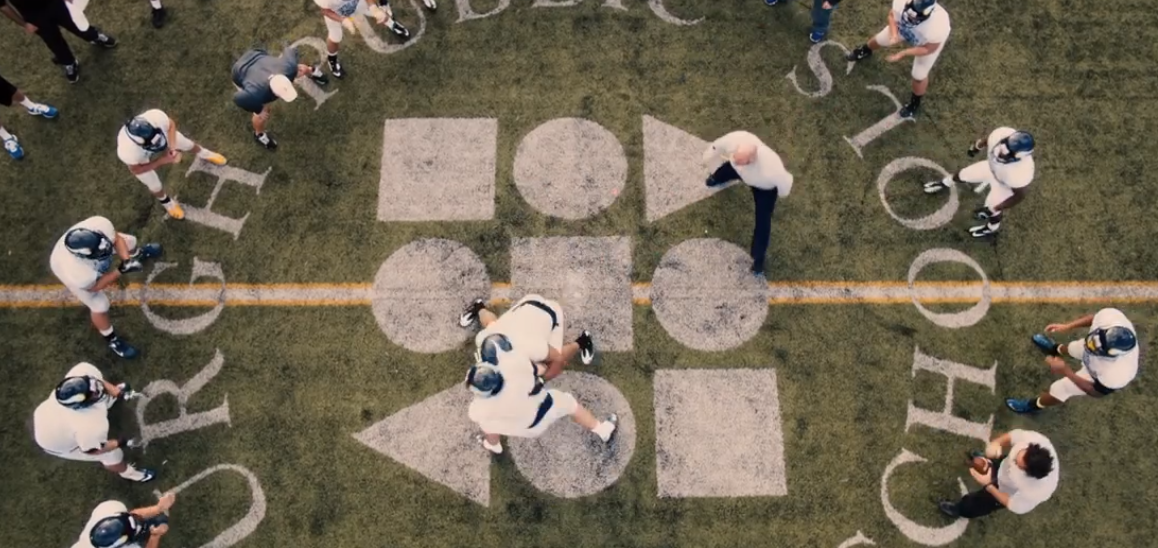
When you take your family to see Sony Pictures’ Concussion, starring Will Smith, what will you get? Some fake-buttery popcorn, maybe a giant Junior Mints. You’ll get a David and Goliath story: The film is the dramatized version of a true story of Nigerian-born neuropathologist Dr. Bennett Omalu (played by Smith), who challenged the National Football League to recognize the risk of concussions to players. You’ll get a couple hours of entertainment and a gripping story.
But your price of admission will also buy you an audience with your kids. It will give you the chance to speak honestly with them about brains and toughness. In the film, the numerous, repeated close-ups of football collisions from highlight reels, even showing youth football, may turn your stomach. After all, the brain is still a great unknown. A hit that does not hurt one person could mean a serious concussion for another. And that while toughness in sports is encouraged, no one — say it again — no one’s brain is tough.
 For Seattle area families the film is particularly timely with the recent tragedy on one of our own football fields. “I applaud Washington for Lystedt, and it’s in all 50 states now,” says Highline school district athletic director Terri McMahan, referring to Washington state's 2009 law mandating, among other things, an athlete’s removal from play if there is suspicion of concussion and written clearance before returning to play. “But I’m not convinced it’s getting through to enough of our kids. I daydream about how to get through to our kids.”
For Seattle area families the film is particularly timely with the recent tragedy on one of our own football fields. “I applaud Washington for Lystedt, and it’s in all 50 states now,” says Highline school district athletic director Terri McMahan, referring to Washington state's 2009 law mandating, among other things, an athlete’s removal from play if there is suspicion of concussion and written clearance before returning to play. “But I’m not convinced it’s getting through to enough of our kids. I daydream about how to get through to our kids.”
An educator for 36 years and longtime sports safety champion, McMahan’s worst nightmare played out this fall when 17-year-old Kenney Bui, a 4.0 student and football player died from severe head trauma suffered during a game. He had had a mild concussion earlier in the season and passed strict return to play protocols. After two weeks on the sidelines, Bui wanted back in the game. In an interview with The Guardian, Bui’s father said he urged his son to quit but that Kenney insisted he keep playing. The teenage son won. And then he lost. The whole family lost.
McMahan was with Kenney and his family when he died. “I definitely had a professional devastation, a personal devastion, I spent time with a beautiful family that had lost a son, nobody is full prepared to handle that,” says McMahan.
Highline has three full-time athletic trainers, many districts do not have a single one. State law does not require it and that’s one thing McMahan would like changed. She would like coaches to check in proactively with athletes, rather than waiting for athletes to come to them if something feels off. She urges both parents and athletes to feel comfortable reporting unusual symptoms.
McMahan plans to watch Concussion, though she’s not sure how soon. It will likely open wounds only beginning to heal: “This has been such a source of grief and sadness for our community. But it’s also important. And if it is another avenue for starting the discussion with kids than it’s a good thing.”
Dr. Stanley Herring, medical director of Sports, Spine and Orthopedic Health at University of Washington Medicine says every brain is so unique that what is normal baseline behavior for one child may vary from another child’s. As he said in a recent educational forum for Highline parents, “I tell my medical students that when you’ve seen one concussion, you’ve seen one concussion.”
What’s needed is a, “Friends don’t let friends play with head injuries” message. The culture of silence, and the fear of being labeled too soft needs to change.
The symptoms look different in every athlete, meaning that if your teen normally loves loud music and after sports practice they can’t tolerate noise? That may signal a problem. Or if your child makes an off-handed comment while grabbing the milk from the fridge that they have a headache? Potential trouble. Parents, you need to let your coach or athletic trainer know, and if your team does not have an AT, call your doctor.
But wait. As parents we often hear we should let the coaches do the coaching, to step back and get out of the way of our kids’ sports. So isn’t it enough that the coaches at the practices and games know what to do if a kid takes a bad hit or fall?
No. “Parents are huge in this, they recognize nuances that only a parent would know so they can pick up the phone and say ‘My child came home acting differently.’ At that point, then we get them with a specialist, then we can help them,” says McMahan. As Herring says, “The risk is in playing with symptoms,” reiterating that often it is not the first hit but a subsequent one that can be so damaging.
In the Sony Pictures film, actors Will Smith, Luke Wilson and Alec Baldwin depict the dark side of a sport and pastime so many of us love watching. The NFL, including our beloved Seattle Seahawks, has built a multi-billion dollar entertainment behemoth around hard hits. Movie watchers will see the story of Pittsburgh Steelers’ Iron Mike Webster on screen. Current fans know the nickname Bam Bam Kam (Chancellor) is a compliment, not a criticism.
Herring says the public awareness campaign surrounding concussions has been successful. But the playing field has shifted. Now begins focus on the public health campaign. “Some of those most devastated young people I’ve seen are ones whose friends said ‘Don’t tell, don’t tell’ and then their friend keels over and dies.”
My own son and his playground friends recently scored an “F” in self-reporting. He and his fourth grade buddies were playing basketball at recess. When a ball knocked his friend over, the boy hit his head on the asphalt and was, according to the kids, unconscious for a brief time. When the friend came to, he didn’t want anyone to tell a playground duty.
So what did my 9-year-old (who, by the way, hears a lot about concussions at home) and his friends do? They said, “Okay,” and continued to shoot hoops. It wasn’t until an hour later back in the classroom when the teacher got wind of the incident did the treatment wheels go into motion. Sure enough, the boy’s family doctor diagnosed him as being concussed.
Herring points out that middle school and elementary-aged kids usually do not have athletic trainers around when they get hurt; they often sustain head injuries while on the playground or bikes rather than organized sports. They need to understand how important it is to get their friend to the school nurse.
In likening this to Mothers Against Drunk Driving’s public health campaign, Terri McMahan says what’s needed is a, “Friends don’t let friends play with head injuries” message. The culture of silence, and fear of being labeled too soft needs to change.
So herein lies the potential value of your movie ticket: Whatever your family’s opinion about playing football might be, if you have sons or daughters who are active — from soccer to cheerleading to being active in the neighborhood or on the playground — use the car ride home to talk. Charge them with helping keep an eye out for their friends and teammates. From the recesses of the dark theater, use this Hollywood thriller to enlighten.
More resources about concussions and brain development in kids
- PBS’ 2013 Frontline report, "League of Denial: The NFL’s Concussion Crisis"
- League of Denial book, by Mark Fainaru-Wada and Steve Fainaru
- "Game Brain" article, GQ Magazine, by Jeanne Marie Laskas.
- Cleveland.com article: "Ann McKee: The woman who fell in love with brains and changed football as we know it," by Stephanie Kuzydym











